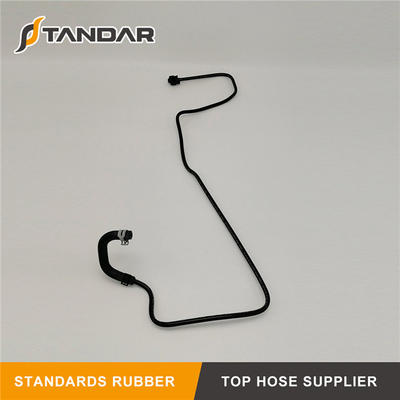- All
- Product Name
- Product Keyword
- Product Model
- Product Summary
- Product Description
- Multi Field Search
Views: 2 Author: Site Editor Publish Time: 2020-05-05 Origin: Site








A water pipe is a flexible, hollow tube used to carry liquid from one place to another. Water pipes are sometimes referred to as hoses. The shape of the water pipe is usually cylindrical. The following article will tell you more about water pipes.

What are water pipes?
What are the types of water pipes?
What are the joining methods for water pipes?
If the coolant puddle on your garage floor is getting bigger by the day, the culprit could be a leaky pipe. You know how dangerous it is to drive with a coolant leak because you don't know when the end of the world will come and your car will become a steaming barricade. Like all parts of your cooling system, water pipes need to be replaced once they become old, rusty or even cracked. Fortunately, there are many heavy water pipes that can be seamlessly installed in your car. These aftermarket pipes are heavily built and rigorously designed to precisely match specifications. Install one and you can forget coolant leaks for a long time. Here's a hint: be prepared in case you have to remove old water pipes from under your vehicle. In any case, installation work is possible and you can do it perfectly without expensive assistance from a mechanic. To start repairing your car, buy a new, high-quality water pipe at the auto parts warehouse.
Just as the properties of different pipeline materials vary greatly, the importance of these properties varies greatly from project to project. The choice of piping material depends on the application and water quality. For example, heating systems usually use steel tubes because of their low cost, high strength and good heat resistance, whereas pure water systems may use pure polypropylene or polyvinylidene fluoride tubes. The same goes for water pipes too.
Steel water pipes has strength, good rigidity, low coefficient of thermal expansion. It is also heavy and prone to corrosion. It is sometimes referred to as carbon steel or black steel to distinguish it from stainless steel and galvanized steel.
Copper tubes are often used for hydraulic and household applications. However, some contractors have suggested replacing galvanized steel with copper under 6 inches in size. Copper is an expensive material, but it has the advantage of being lighter than steel, and may require fewer workers to install it, depending on weight and union restrictions. In addition, copper is usually more expensive and corrosion resistant than steel or galvanized steel.
It is generally accepted that stainless steel is resistant to all corrosion. This is true in many cases, but not all.
PVC water pipe is often used in residential applications and is increasingly popular in commercial/industrial applications. It has the advantage of being very resistant to most corrosion, but not to solvents or some oils.
Welding is an ancient and reliable technique. It's basically melting these water pipes together. Steel and polypropylene use this method. Welding can be used on galvanized steel, but it is virtually impossible to repair the zinc coating inside the water pipe, so mechanical connections are preferred.
Threading involves screwing water pipes together, usually with an internal threaded joint between two threaded pipe segments. Thread machining is common in steel tubes and galvanized steel tubes. It is also common for some plastic pipe materials.
Flanging is expensive, but it's practically foolproof. Flange connections can withstand any desired pressure and may be dielectric to reduce corrosion.
We have all kinds of water pipes in stock and they are all at normal retail prices. If the idea of overheating in the middle of the highway doesn't interest you, don't put off changing jobs. Buy a new water pipe today.